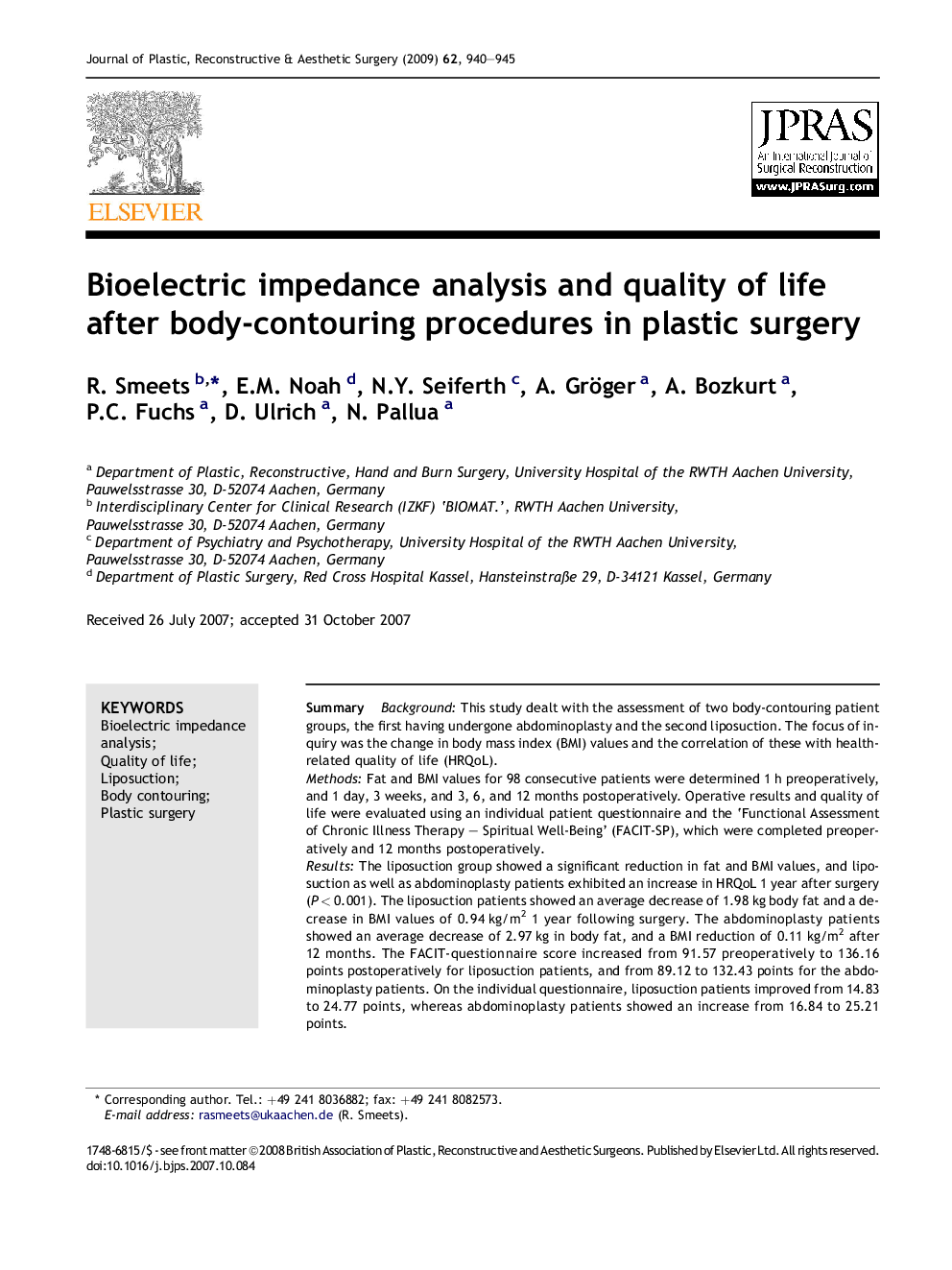| Article ID | Journal | Published Year | Pages | File Type |
|---|---|---|---|---|
| 4119778 | Journal of Plastic, Reconstructive & Aesthetic Surgery | 2009 | 6 Pages |
SummaryBackgroundThis study dealt with the assessment of two body-contouring patient groups, the first having undergone abdominoplasty and the second liposuction. The focus of inquiry was the change in body mass index (BMI) values and the correlation of these with health-related quality of life (HRQoL).MethodsFat and BMI values for 98 consecutive patients were determined 1 h preoperatively, and 1 day, 3 weeks, and 3, 6, and 12 months postoperatively. Operative results and quality of life were evaluated using an individual patient questionnaire and the ‘Functional Assessment of Chronic Illness Therapy – Spiritual Well-Being’ (FACIT-SP), which were completed preoperatively and 12 months postoperatively.ResultsThe liposuction group showed a significant reduction in fat and BMI values, and liposuction as well as abdominoplasty patients exhibited an increase in HRQoL 1 year after surgery (P < 0.001). The liposuction patients showed an average decrease of 1.98 kg body fat and a decrease in BMI values of 0.94 kg/m2 1 year following surgery. The abdominoplasty patients showed an average decrease of 2.97 kg in body fat, and a BMI reduction of 0.11 kg/m2 after 12 months. The FACIT-questionnaire score increased from 91.57 preoperatively to 136.16 points postoperatively for liposuction patients, and from 89.12 to 132.43 points for the abdominoplasty patients. On the individual questionnaire, liposuction patients improved from 14.83 to 24.77 points, whereas abdominoplasty patients showed an increase from 16.84 to 25.21 points.ConclusionsThese findings indicate an overall improvement in HRQoL of the abdominoplasty as well as the liposuction patients, in the latter group accompanied by long-term success in reduction of fat and BMI values.
